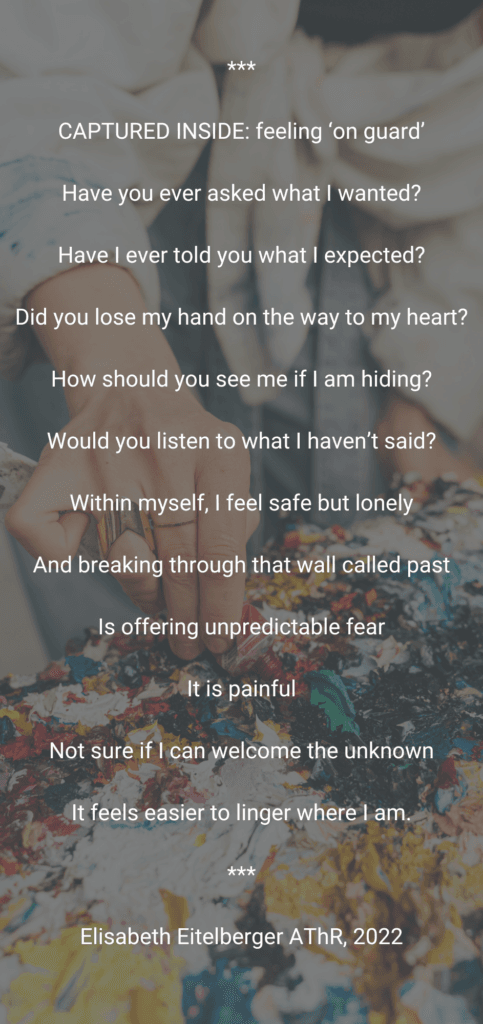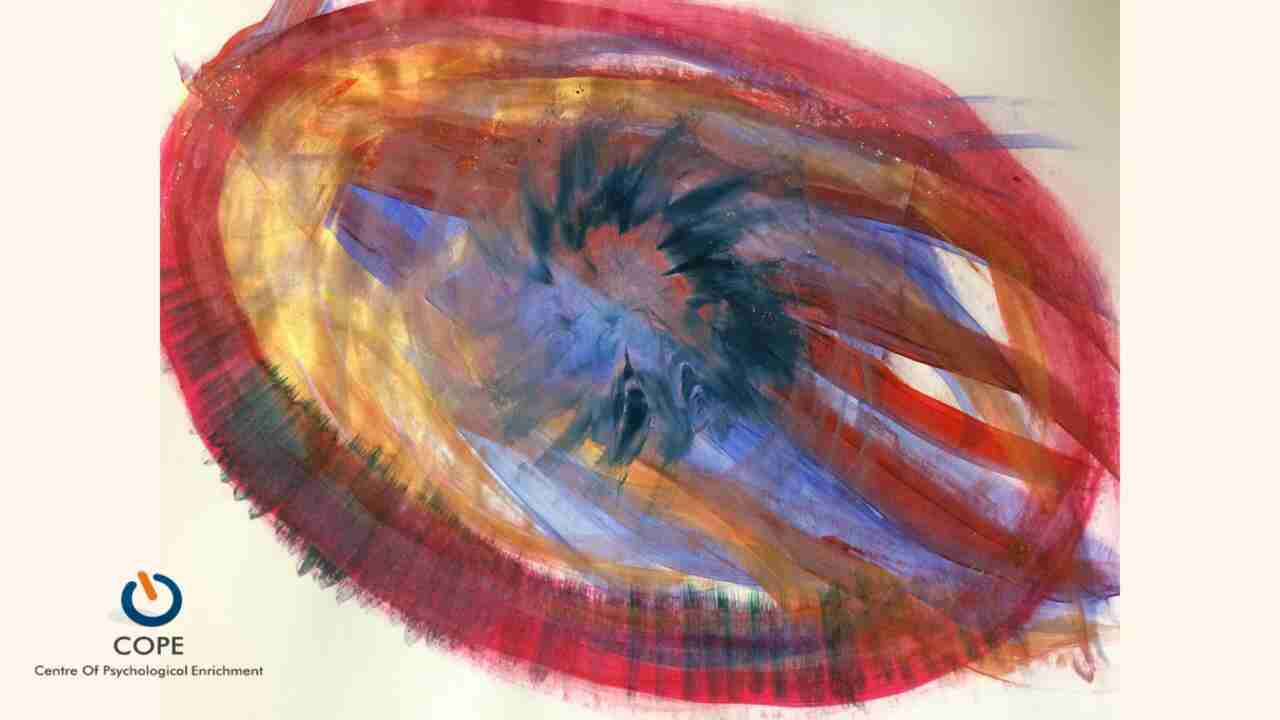What are healthy and safe boundaries?
Boundaries are safe when they are maintained by a certain flexibility that allows adjustments and change. Boundaries can shift. We form, revisit, and question them through regular checking in, contracting and the communication of consent (in sexual and non-sexual relationships). To have healthy boundaries does not mean, we need to please others or to close off ourselves from the outside world. The work around boundaries is laborious and ongoing in life. Many social media platforms and websites give tips on the topic, which can create the impression that easy steps will lead to success. It’s not that simple!
Sometimes this work is messy. It is complex, full of emotional ups and downs. It often reveals strong feelings such as stuckness, numbness, hopelessness, aggression, frustration and resistance related to our past and present. Above all, it is about visiting a vulnerable territory. It affords time to explore from different perspectives. It involves the stories of the self and the many stories of our environment. While we build resilience and helpful strategies through arts therapy, therapist and client come across ‘boundaries’ all the time.

Boundaries in relationships
Trauma relates to harmed physical and/or psychological boundaries. Intrusion of some kind has led to a re-interpretation of what boundaries are or supposed to look like. This can vary from person to person. This is why emotional attachment to boundaries involves our personal history, our story and the people that cross our path.
With some, we may engage quite openly. Trust towards each other keeps such relationships alive. At other moments, this trust may have been broken and the functionality of a relationship starts to crumble. Then we move into a state of alarm. Our understanding of „relationship“, and the boundaries in that context have been altered.
From the start of therapy, therapist and client enter a relationship that is developmental in nature. This relationship changes over time, just like in everyday settings. Most importantly it is built around mutual respect. Ideally, it fosters clients’ progress into self-activation, to learn to understand triggering aspects that influence their action and reaction.
Building trust in the therapeutic relationship takes time. Furthermore, it involves clients’ willingness to face their own fears and negative emotions in a genuine way. But this can be a highly difficult journey because of past experiences.
Those feelings of guilt and shame
Creating and maintaining boundaries can be daunting as it influences how we are seen and perceived by others. It defines how we interact and how we look after ourselves. Perhaps we want to be liked or have never learned what healthy boundaries are. Maybe we avoid conflict or just freeze when someone gets too close, defence mechanisms get activated.
If as a child, our boundaries get damaged, it leaves a sense of guilt. At that stage, we would not have been able to defend our boundaries, but we can make changes in the here and now.
In arts therapy we use various creative methods, besides ”talking”, to achieve repair and insight over time. Often simple visual explorations can reveal something obvious. They provide the chance to shift how we perceive a certain situation and/or habituated behaviour of self and others in action and reaction. We basically revisit and re-enact how guilt and shame feelings have been formed in the past. Further, we explore how this still affects us. The work with expressive imagery and embodiment strengthens our understanding of boundaries. In the same way, it teaches us how to create a safe space for change to promote self-growth.

11
Poem, Painting and Blog by Elisabeth Eitelberger AThR, 2022
References:
- Eberhart, H., & Atkins, S. S. (2014). Presence and process in expressive arts work: At the edge of wonder. Jessica Kingsley Publishers.
- Leigh, J., & Bailey, R. (2013). Reflection, reflective practice and embodied reflective practice. Body, Movement and Dance in Psychotherapy, 8(3), 160-171. https://doi.org/10.1080/17432979.2013.797498
- Leuzinger-Bohleber, M. (2018). Finding the body in the mind: Embodied memories, trauma, and depression. Taylor and Francis. https://doi.org/10.4324/9780429474781
- Levine, E. G., editor, & Levine, S. K., editor. (2017). New developments in expressive arts therapy: The play of poiesis. Jessica Kingsley Publishers.
- McNiff, S. (2011). Artistic expressions as primary modes of inquiry. British Journal of Guidance & Counselling, 39(5), 385-396. https://doi.org/10.1080/03069885.2011.621526
- Ogden, T. H. (1990;1992;2018;). The matrix of the mind: Object relations and the psychoanalytic dialogue (1st ed.). Routledge. https://doi.org/10.4324/9780429482403
- Pattison, S. (2000). Shame: Theory, therapy, theology. Cambridge University Press. https://doi.org/10.1017/CBO9780511612411
COPE Centre of Psychological Enrichment
📞 (08) 6556 6460
📧 [email protected]